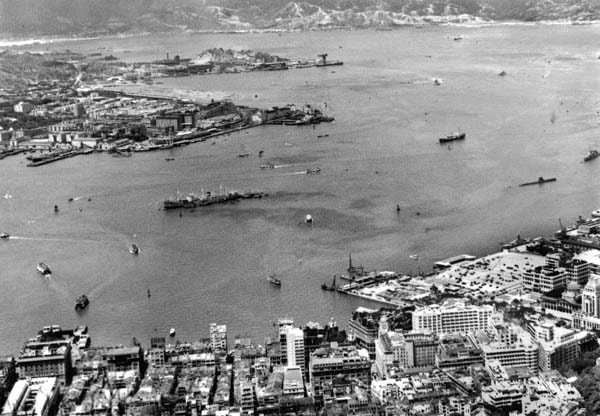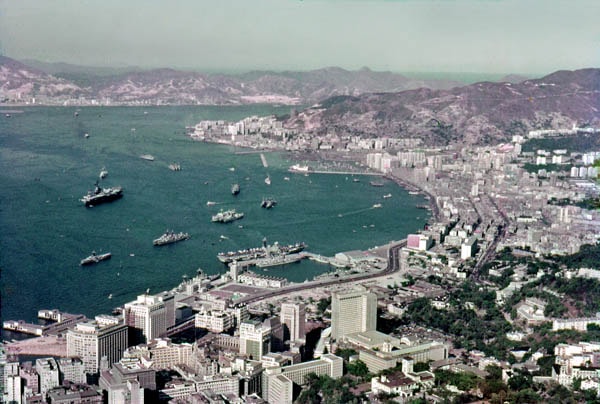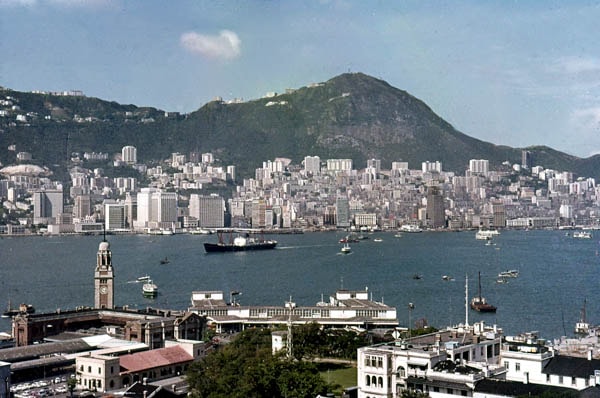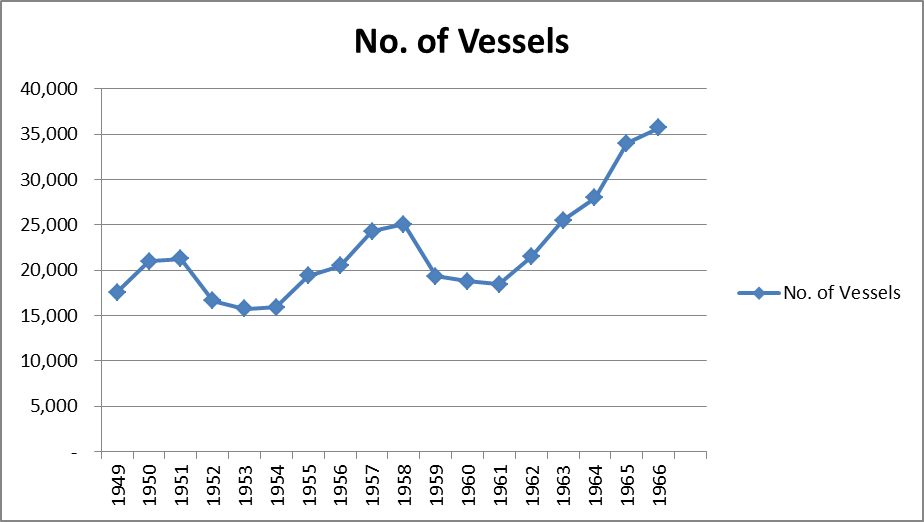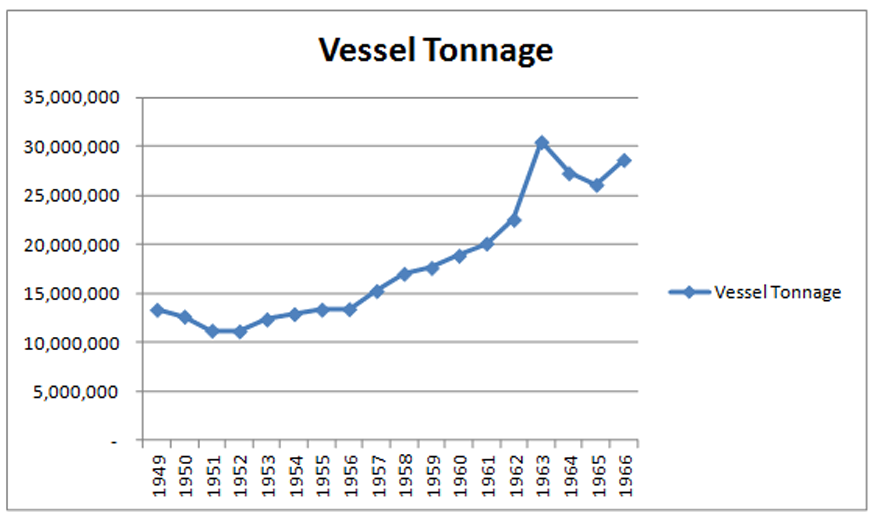During the Second World War, many parts of Hong Kong were devastated by the Japanese and the subsequent counter-attack launched by the Allied Forces. After the war, the Hong Kong Government focused on the reconstruction and further development of the port.
The embargo
After the Second World War, the world was soon dragged into another conflict, the Korean War, which broke out in 1950. Since China was involved in the Korean War as an ally of North Korea, the United States and the United Nations asked other countries to impose an embargo on China. Hong Kong, being a colony of Britain, strictly banned the export of wartime materials to China.
Before the embargo, Hong Kong’s shipping industry relied heavily on the China trade, with China regarding Hong Kong as a middleman for importing foreign products. Hong Kong was dependent on China for food supplies such as livestock and dry goods. In 1938, more than 40% of Hong Kong’s trade was with China. But after 14 years, the figure dropped sharply to a mere 20%[1], with only $1.35 billion worth of trade between them.[2] Also, in 1952, government statistics revealed that the total value of annual imports and exports decreased by 28.2% when compared with 1951.[3] The embargo policy gave Hong Kong’s economy and Hong Kong people’s livelihood a near-fatal blow.
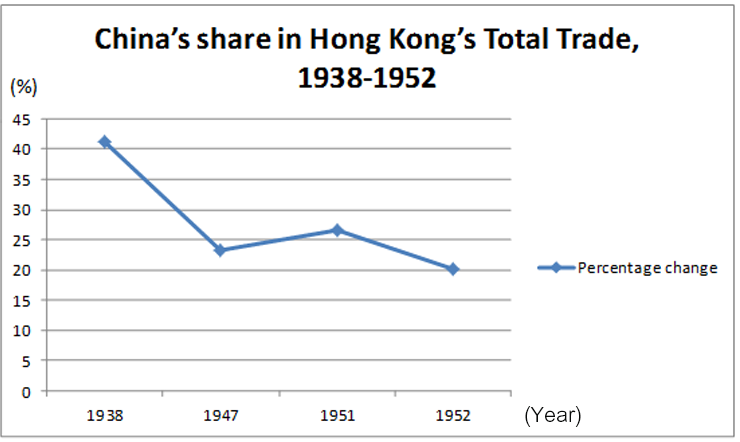
China’s share in Hong Kong’s Total Trade from 1938 to 1952[4]
Nevertheless, the embargo policy gave a chance for the shipping industry to develop. Even though the colonial government imposed many restrictions on exports, Hong Kong merchants and shipowners retained their trade connections with China. Among them, Frank Tsao (曹文錦) and Henry Fok Ying-tung (霍英東) were outstanding figures. Tsao further expanded his shipping company during the embargo. By transporting bulk cargoes of iron plates, petrol and other materials to China, Fok became a famous entrepreneur and was deeply appreciated by the Chinese government.
The Industrialisation of Hong Kong
The post-war industrialisation of Hong Kong was not only caused by the embargo. Due to the unstable political and social environment in China, many Chinese, especially Shanghainese factory owners, relocated to Hong Kong. Most of the newcomers brought with them the capital and technology to re-establish their businesses in the Colony. By 1960, there were more than 800 textile factories and 600 garment factories in Hong Kong. About 100,000 people worked in the textile and garment industry, which comprised one fifth of the total working population.[5] Another significant, and relatively new, industrial sector was plastics, producer of the main materials for items such as plastic bags and raincoats. Plastic products contributed 12% of the total exports of Hong Kong-made products.[6] Such huge production implied great demand from the overseas markets, and inevitably stimulated further growth of the shipping industry.
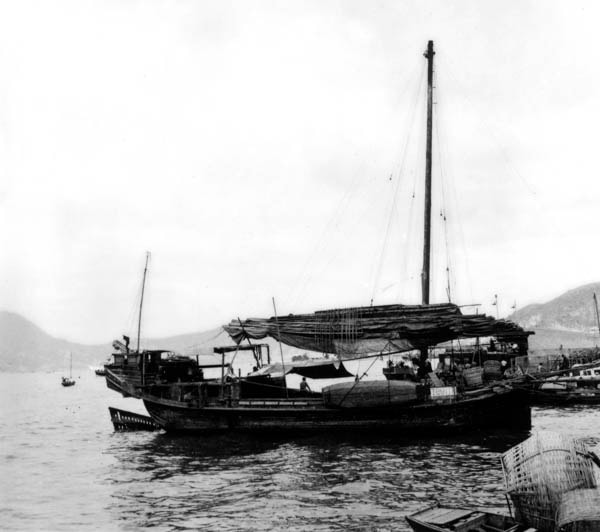
Plate 4: During the early period of the industrialisation of Hong Kong, cargo junks were commonly used in trading activities, 1956
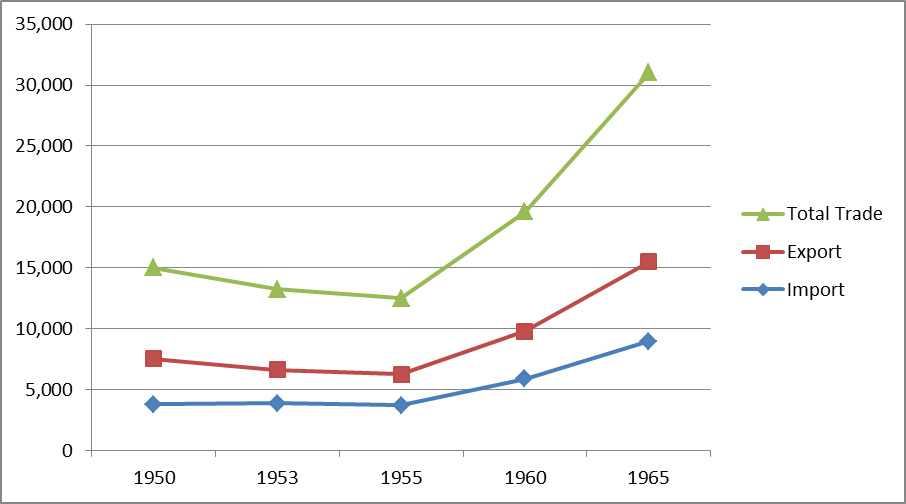
Hong Kong Imports and Exports (1950 – 1970)[7]
(Unit: Million Hong Kong Dollars)
There were marked increases in imports and exports from the mid-1950s. Industrialisation created various demands. Among various types of vessels, steamships and motor vessels were the most popular, generating a need to upgrade shipyard facilities so as to increase shipbuilding capacity. Also, as large international motor vessels started to come to Hong Kong, the dockyards also needed to upgrade their repair facilities to cater for ocean-going vessels. Both Taikoo Dockyard and the Hong Kong and Whampoa Dock Co. Ltd. upgraded their facilities to this end. As the upgrade needed a huge amount of labour, a large number of registered workers were devoted to the shipbuilding and ship-repairing industries, leading to prosperity for these sectors.[8] Moreover, owing to the frequent arrival and departure of ocean-going vessels, guaranteeing safe traffic in the port of Hong Kong became ever more vital. Thus, port facilities such as fairways, anchorages and mooring buoys had to be enhanced, thus further encouraging the general development of the port.
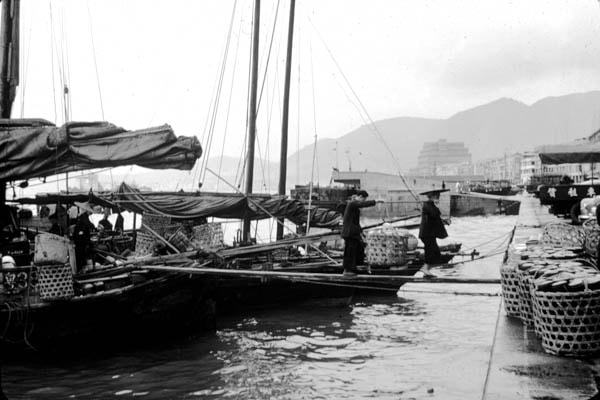
Plate 5: Workers unloading goods from a junk, a common scene on the Wan Chai waterfront, illustrating how goods were handled in this early period, 1955.
Owing to the huge demand for shipping services and vessels, Hong Kong’s industrialisation and export trade expanded rapidly throughout the 1950s and 1960s. The graphs below illustrate trends in the number of vessels entering Hong Kong during this period, and their tonnages. In the early 1950s, owing to the political instability in China and the embargo, both the number of vessels and the tonnage underwent a decline. Later on, when various industries started to develop, the statistics reveal a sharp increase.[9] As shipping was an essential means of delivering finished products to overseas markets, the increasing trend was a good indicator of the industry’s contribution to the industrialisation of Hong Kong.
Notes:
- [1]李宗文:《香港進出口貿易手冊》,中卷(香港:工商觀察社,1954),頁2。
- [2]盧受采、盧冬青:《香港經濟史》(香港:三聯書店(香港)有限公司,2002),頁199。
- [3]經濟導報社:《香港經濟現況與出路》(香港:經濟導報社,1953),頁2。
- [4]李宗文:《香港進出口貿易手冊》,中卷,頁2。
- [5]賀弘景:《香港的昨天、今天和明天》(北京:世界知識出版社,1994),頁162。
- [6]盧受采、盧冬青:《香港經濟史》,頁209。
- [7]Ibid.,p. 212.
- [8]T. N. Chiu, The Port of Hong Kong, (Hong Kong : Hong Kong University Press, 1973), p. 94.
- [9]Marine Department Annual Departmental Reports, 1949-66.

